Did you know that oak trees are more than just majestic trees that provide shade? The oak tree, well-known for its lovely, lobed green leaves and tiny acorns, is revered worldwide as representing knowledge, sturdiness, and persistence. Over 500 extant species of the genus Quercus include the oak as a tree or shrub. Oak trees are best grown in the United States‘ west and the American southwest due to the region’s versatile climates. So, are there oak trees in Texas, then?
If you’re from Texas, you know how significant oak trees are to the state’s environment and way of life. Oak trees in Texas are well known throughout the state. In addition to offering lots of shade for locals, acorns, and shelter for nearby wildlife, these tall, majestic trees may be seen all over the Lonestar State. In fact, Texas is home to more than 50 natural types of oak trees. Below, we will explore the 15 different types of oak trees in Texas and other fascinating facts.
15 Oak Trees in Texas
1. Post Oak

The post oak is a small to medium-sized tree with a trunk diameter of 1 to 2 feet.
©Larry D. Moore / CC BY-SA 4.0 – License
Because it produces so many acorns, the post oak (Quercus stellata), found throughout most of Texas, is one of the most significant oak trees for animals. The Post Oak Savannah ecoregion is named after this kind of oak because it is so prevalent. Since they require little water and can withstand the heat well (and we all know how hot it can get in Texas), they thrive here. The post oak is a small to medium-sized tree with a trunk diameter of 1 to 2 feet, but it usually grows much smaller, and can grow to 40 feet and a maximum of 108 feet.
2. Live Oak

The oldest live oak tree in Texas is over 1,000 years old.
©iStock.com/Sunshower Shots
The evergreen nature of the live oak, as opposed to the deciduous nature of the majority of other oak species, is how it got its name. Despite only reaching a height of 50 to 75 feet, the live oak (Quercus virginiana) can spread out over 100 feet, with large limbs reaching the bottom in all directions. Live oaks live for a long time. In fact, the oldest specimen in Texas is more than 1,000 years old! If you decide on a live oak for your landscaping, you can enhance it with native shrubs and plants that thrive in the shadow and use little water.
3. Bur Oak

One of the fastest-growing shade trees is the bur oak tree.
©iStock.com/EIBrubaker
The bur oak, often referred to as the prairie oak (Quercus macrocarpa), is distinguished by its enormous leaves and massive acorns. Although it may adapt to most state locations, this plant is endemic to Central and West Texas grassland plains. One benefit of including a bur oak in your garden is that it is one of the fastest-growing shade trees, with perfect conditions allowing it to grow up to two or three feet per year. At maturity, they can grow to be up to 100 feet tall. Bur oaks can live for 300 years or longer.
4. Shumard Red Oak

The Shumard red oak can grow as tall as 120 feet.
©iStock.com/JOSE LUIS VEGA GARCIA
In moist, well-drained soil, the Shumard red oak (Quercus shumardii) can grow as tall as 120 feet and 50 feet wide. The tree bears Benjamin Franklin Shumard’s name, who served as Texas’s state geologist in the late 1800s. This oak species can be grown in Central Texas’ saline soil if there is enough precipitation, even though it is best suited to the eastern section of the state. The leaves of this particular type of oak, which turn a beautiful scarlet and purple in the fall, are one of its distinguishing characteristics.
5. Red Oak
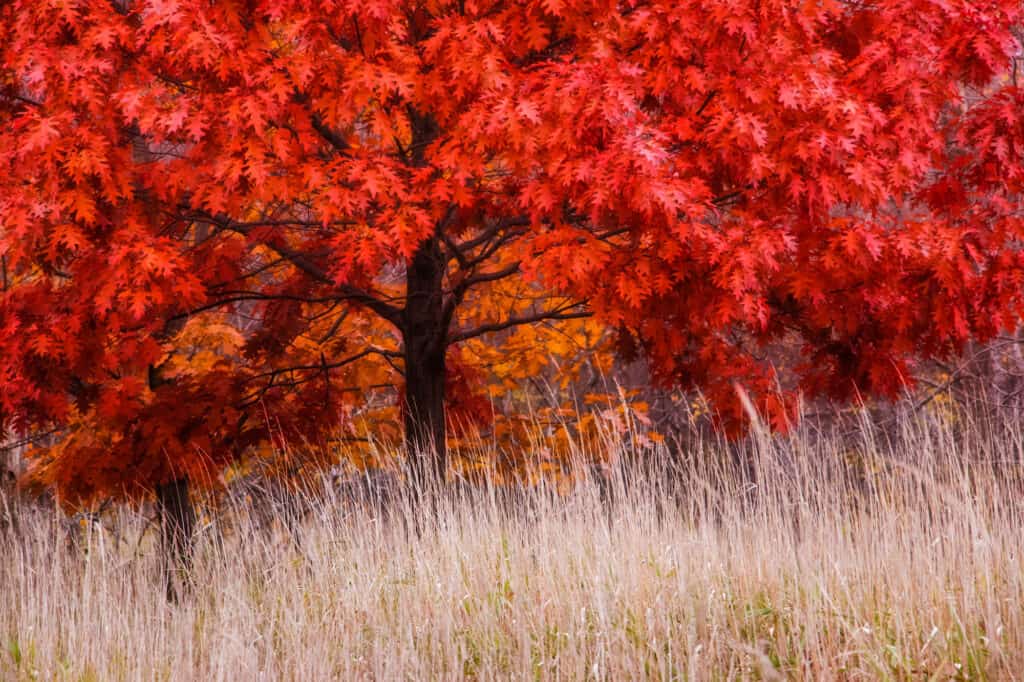
Red oaks do best in direct sunshine and can withstand periods of drought, dry soil, and smog.
©iStock.com/Jean Landry
The red oak boasts a classic facade with serrated, multi-lobed leaves and a rounded crown, occasionally reaching heights of up to 90 feet. Its leaves are bright green in the spring and summer and a vivid red in the fall. Red oaks do best in direct sunshine and can withstand periods of drought, dry soil, and smog. One advantage of planting a red oak is that you won’t have to deal with acorn cleanup for a while.
6. Mexican Oak
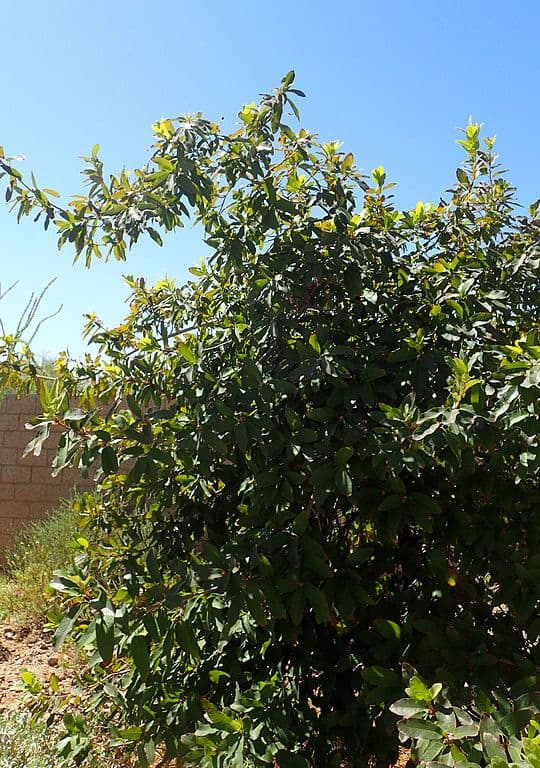
The leaves of a Mexican oak tree only fall for a few weeks in the winter.
©Krzysztof Ziarnek, Kenraiz / CC BY-SA 4.0 – License
Mexican oak grows up to four feet per year and is well adapted to Texas’ warm climate, allowing you to enjoy the shade sooner. The leaves of a Mexican oak differ from those of most oak species, and its leaves only fall for a few weeks in the winter so that you may enjoy nearly year-round greenery. They are practically ovular and have serrated edges.
7. Lacey Oak
With a mature height of 20 to 30 feet, the Lacey oak is a wonderful option if you’re looking for a small oak tree. Texas people adore growing Lacey oaks in their tiny yards near their patios. They have a lovely, rounded canopy and blue-green leaves with rounded edges. Additionally, Lacey oaks don’t need plenty of water, and they won’t grow on soils with poor drainage.
8. Chinquapin Oak
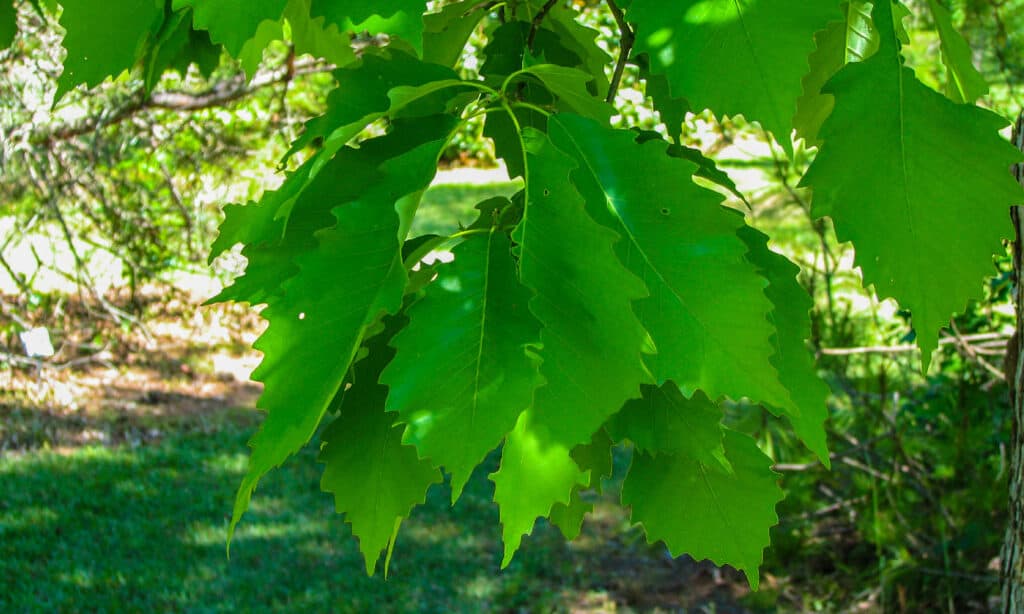
The acorns of the Chinquapin oak tree are edible if you roast them.
©iStock.com/cws_design
The simple, oblong leaves of the Chinquapin oak tree have sharp teeth and reach a height of around 70 feet. It offers a lot of shade and has a rounded crown. If you roast them, the acorns of the Chinquapin oak are genuinely edible. These trees thrive on rich soil and direct sunlight and take on a stunning rust hue in the fall.
9. Nuttall Oak
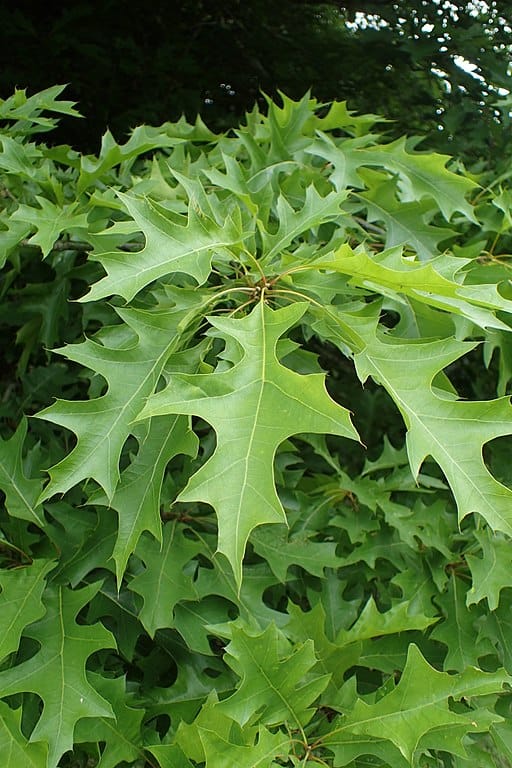
The Nuttall oak tree has sharp points on its leaves.
©Krzysztof Ziarnek, Kenraiz / CC BY-SA 4.0 – License
The south-central region of the United States is home to the quick-growing Nuttall oak. It has dark-brown bark and reaches a height of approximately 80 feet. The Nuttall oak’s stunning red fall foliage and capacity to flourish in moist soils are two of its most noteworthy characteristics. It differs from the Texas red oak, now known as the Quercus buckleyi, in that it has sharp points on its leaves, like some other species of oak trees.
10. Black Oak
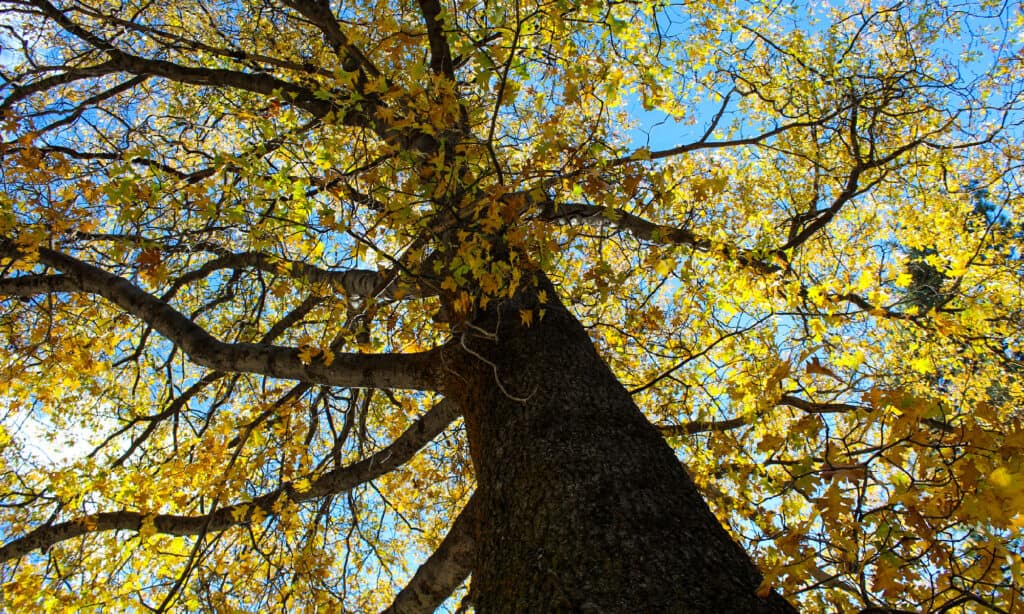
The black oak thrives on sandy upland slopes with coarse-textured, slightly acidic soil.
©iStock.com/Jared Quentin
East Texas’ Pineywoods and Post Oak Savannah are home to the stunning black oak. It thrives on sandy upland slopes with coarse-textured, slightly acidic soil. One of the most beautiful oaks in eastern Texas, it is extremely shade-intolerant and has deep, lush green leaves in the summer and golden yellow leaves in the fall. The black oak rarely grows in thickets and groves; it only occurs alone or in pairs.
11. White Oak
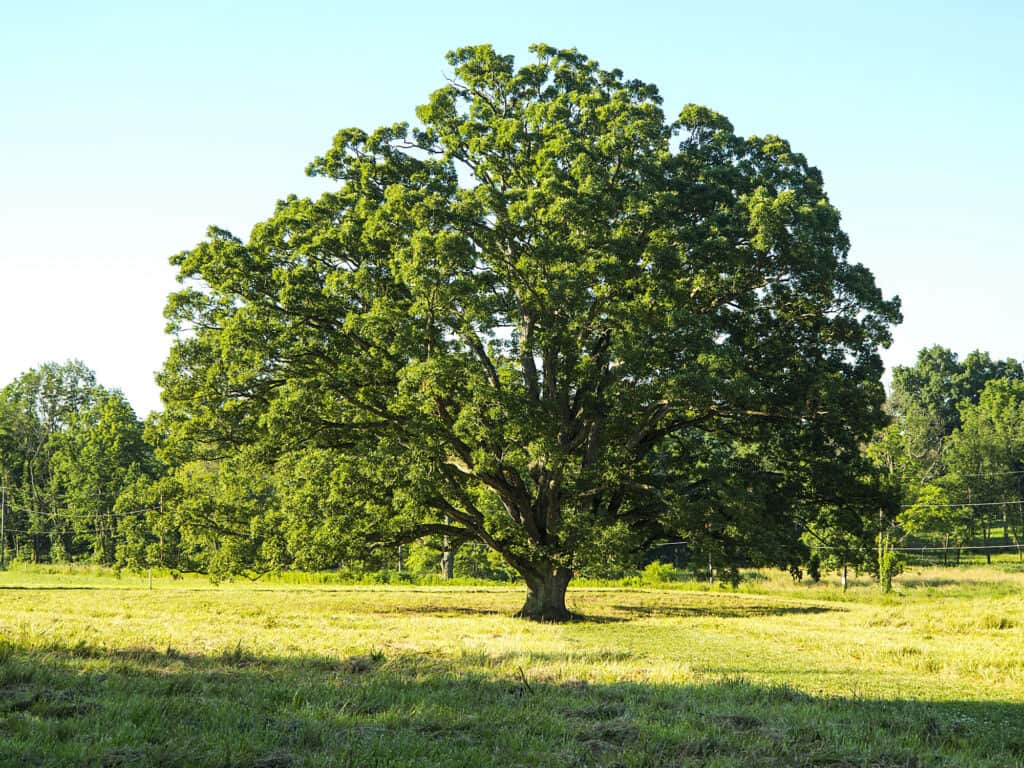
White oaks thrive best on fertile slopes, but they can also flourish on arid uplands or gravelly hills.
©iStock.com/Cris Andrei
The white oak is a sizable forest or shade tree that may reach heights of 100 feet, has a trunk diameter of 3 feet or more, and has a broad, rounded crown covered in dense leaves. Open-grown specimens frequently grow long limbs and short trunks. White oaks are a common tree in East Texas, from the Brazos River westward. They thrive best on fertile slopes, but they can also flourish on arid uplands or gravelly hills.
12. Laurel Oak
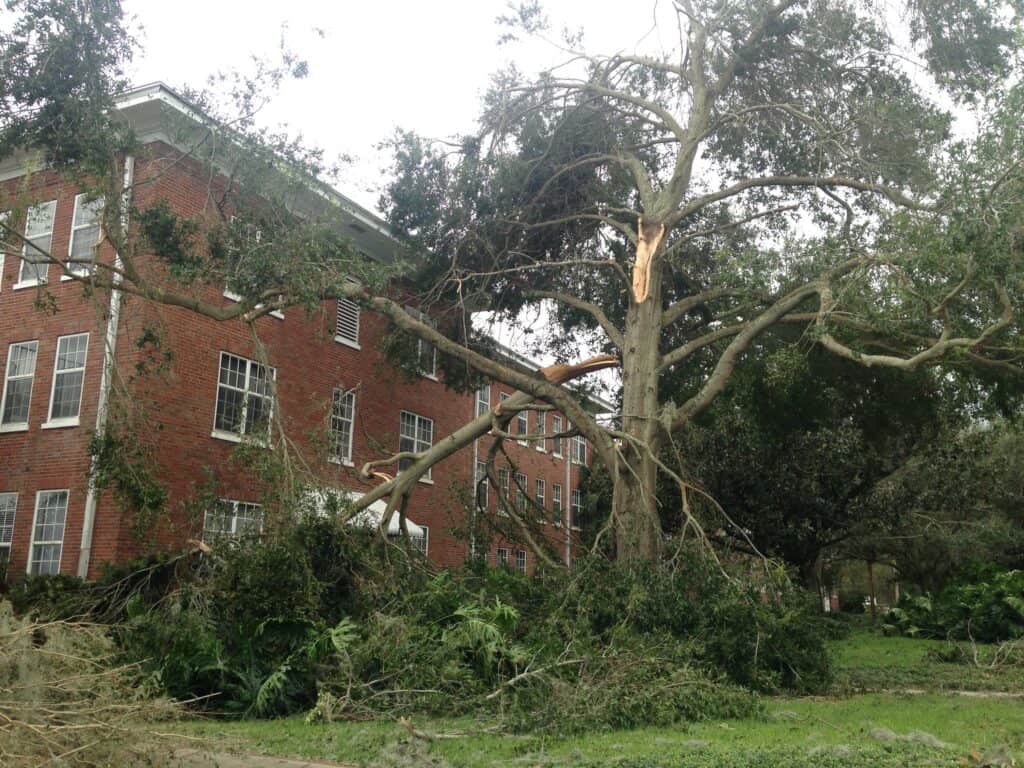
While it resembles willow oak, laurel oak has broader leaves over an inch long
©Malcolm Manners / flickr – License
Laurel oak is native to East Texas and the southeastern United States. While it resembles willow oak, it has broader leaves over an inch long and is frequently lobed on young trees. It has glossy leaves, a compact growth habit, and fast growth.
The southeast Texas Coastal Bend is home to the coast laurel oak, which thrives on sand plains. It is a little tree or clump-forming shrub that produces large mottes of color. It is closely related to the laurel oak of the Pineywoods and might be regarded as a geographical or climatic species of that tree.
13. Swamp Spanish oak
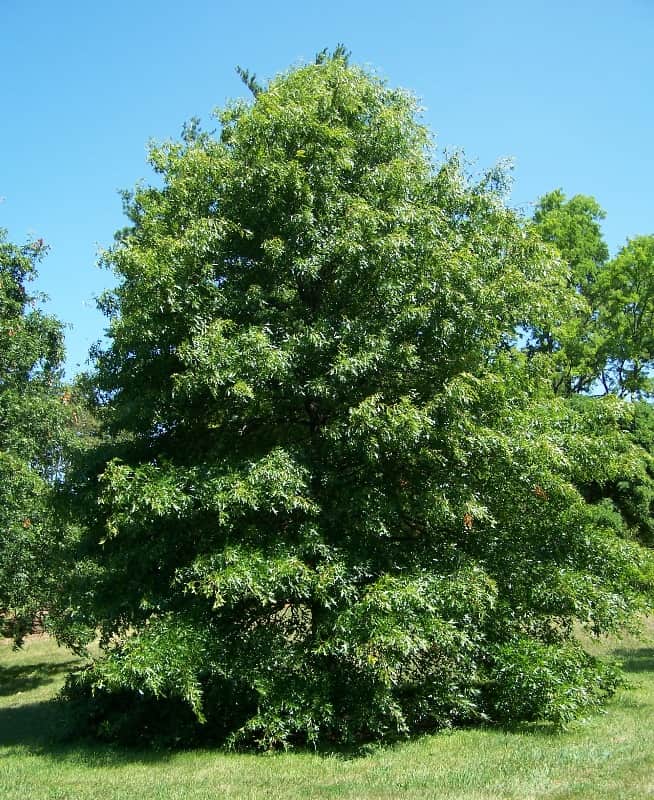
The swamp Spanish oak is one of the rarest oaks in Texas.
©Bruce Marlin / CC BY-SA 2.5 – License
Due to its ease of transplantation, relatively rapid growth, and resistance to pollution, the pin oak or swamp Spanish oak is among the most often used landscape oaks in its native range. It is one of the rarest oaks in Texas and thrives in locations with seasonal flooding and constant precipitation. It also grows in poorly drained soils.
14. Gambel Oak
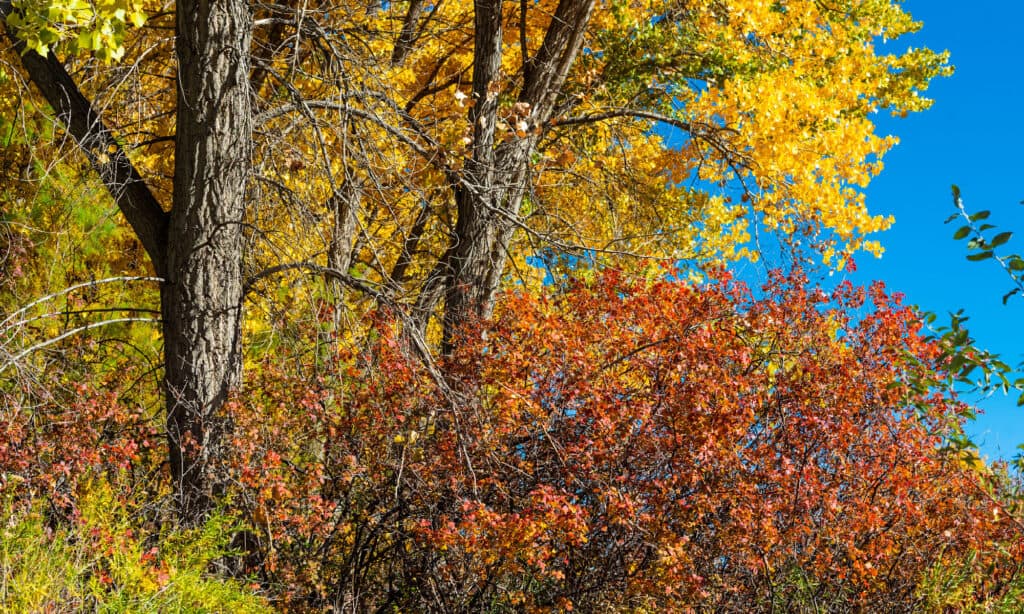
In the fall, the leaves of Gambel oak turn brown or occasionally crimson.
©iStock.com/bluerabbit
In the Trans-Pecos mountains in west Texas’ Chinati, Chisos, Guadalupe, and Davis mountains at high altitudes (typically above 6,000 feet) are where Gambel oaks grow. They are 15 to 25-foot tall little trees that grow in thickets. They resemble the white oak wonderfully, despite the petite scale. The Gambel oak has highly lobed, deciduous leaves that are bright green above and lighter below. In the fall, the leaves turn brown or occasionally crimson.
15. Willow Oak
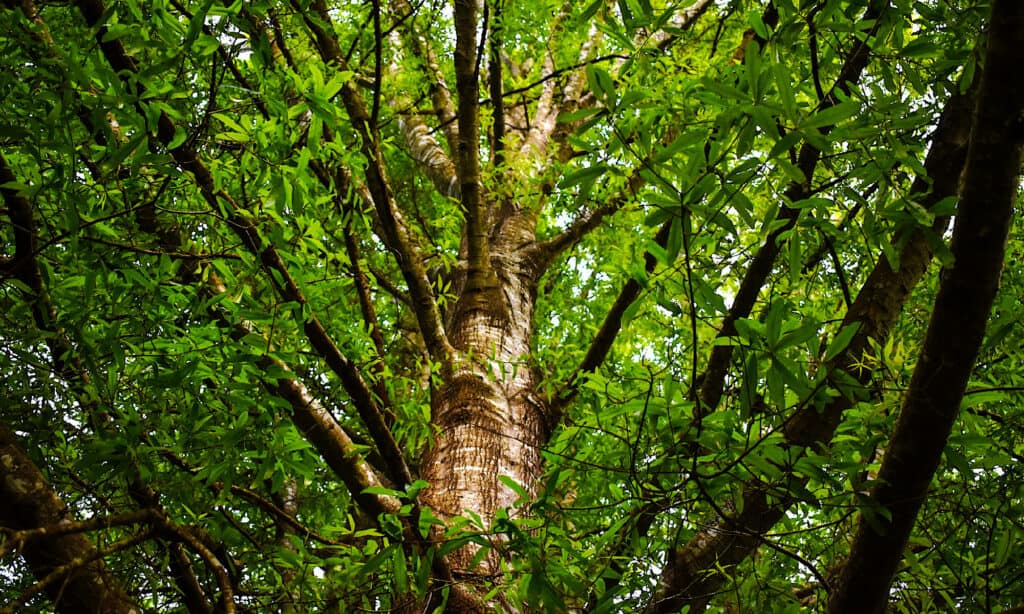
In East Texas, from the Brazos River westward, willow oaks are usually seen on frequently inundated bottomlands.
©iStock.com/Caytlin Endicott
The willow oak belongs to the red oak group of oaks and is a species of deciduous tree native to North America. A magnificent tree ideal for lawns, roadside vegetation, and parks, it is a sizable tree that can grow up to 90 feet tall and has a trunk that can reach 3 feet in diameter. In East Texas, from the Brazos River westward, willow oaks are usually seen on frequently inundated bottomlands and along the edges of rivers and wetlands.
Threat to Texas Oak Trees
Oak wilt, a fatal fungal disease that impairs the tree’s ability to retain water, is one of Texas’ largest hazards to oak trees. A fungus called oak wilt spreads through the tree’s vascular system, preventing it from receiving nutrients and water. Lack of nutrients and water causes the tree to wilt and the leaves to fall off, which finally causes the tree to die.
Pruning should only be done in the cooler months if you want to prevent the spread of oak wilt. By not moving firewood, you can further reduce the likelihood of oak wilt spreading.
The photo featured at the top of this post is © iStock.com/bluerabbit
Thank you for reading! Have some feedback for us? Contact the AZ Animals editorial team.






